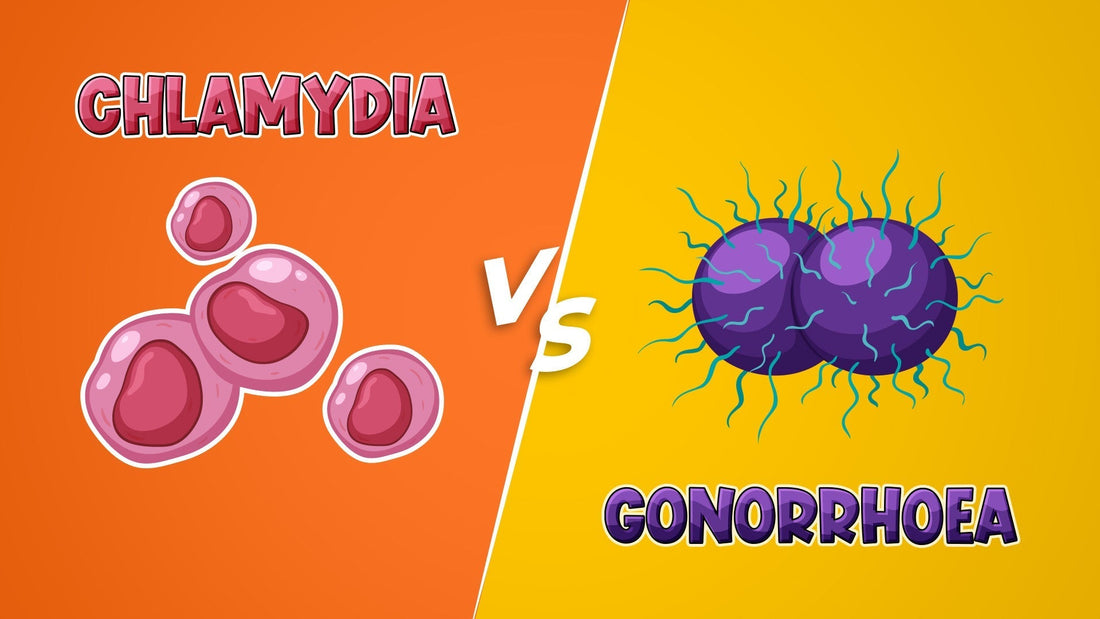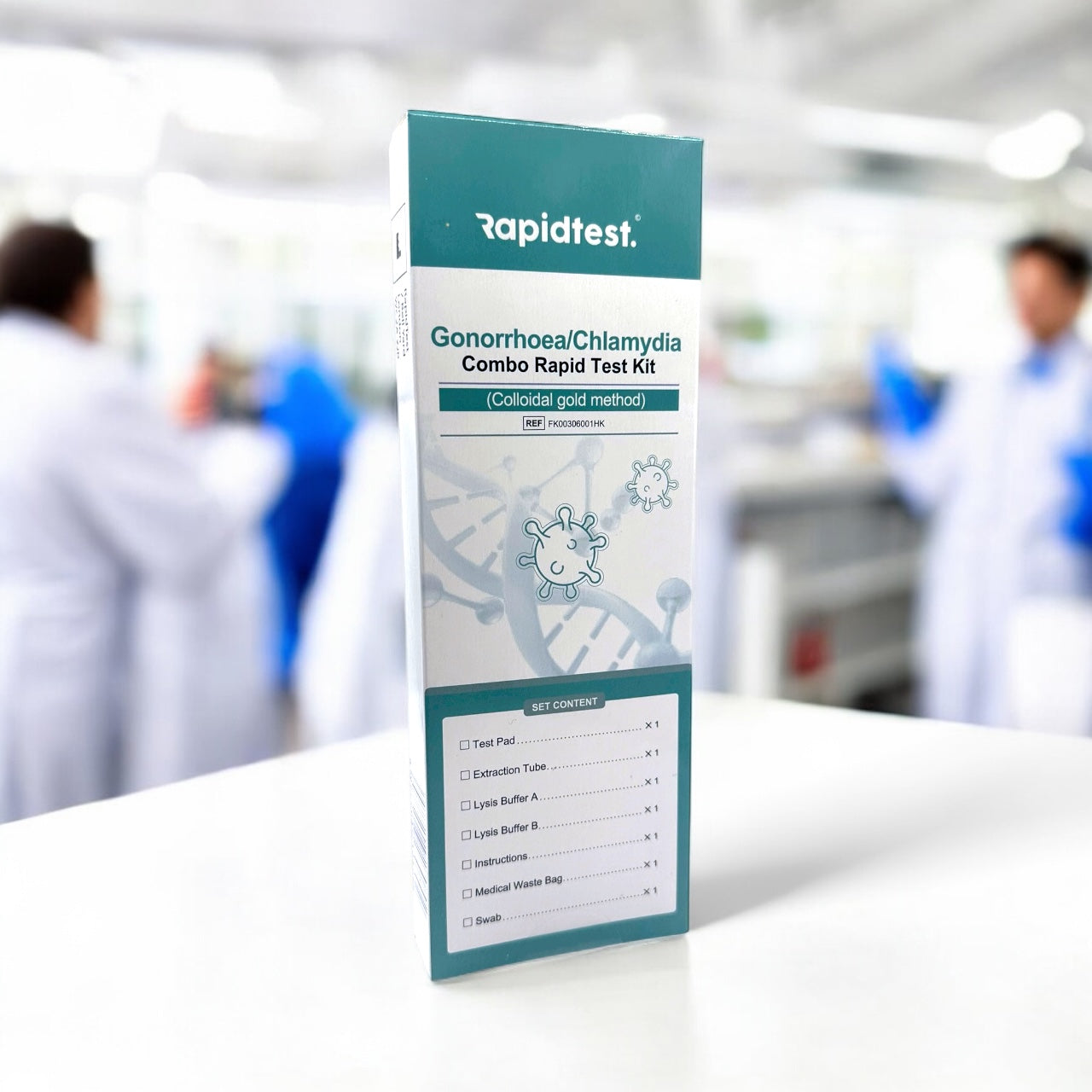
Chlamydia vs Gonorrhea – What’s the Difference?
Share
🧬 Overview
Chlamydia and gonorrhea are two of the most common sexually transmitted infections (STIs), affecting millions of people every year.
Both can lead to serious long-term complications if untreated — but with modern rapid testing, detecting and treating them early has never been easier.
Although they share some overlapping symptoms, they are caused by different bacteria and require specific antibiotic treatments.
| Infection | Caused by | Detection Method | Incubation Period |
|---|---|---|---|
| Chlamydia | Chlamydia trachomatis | Swab or urine antigen test | 7–14 days |
| Gonorrhea | Neisseria gonorrhoeae | Swab or urine antigen test | 5–7 days |
→ Shop Combined Chlamydia & Gonorrhea Rapid Test Kit
🧠 Why They’re Often Confused
Because the bacteria infect similar areas — the genitals, throat, or rectum — and often present with mild or no symptoms, it’s common for patients to be unsure which infection they have.
That’s why dual testing is recommended: many people are infected with both at once.
⚠️ Shared Symptoms
Both infections can cause:
-
Burning or stinging when urinating
-
Unusual discharge (cloudy, yellow, or greenish)
-
Pelvic pain or lower abdominal discomfort
-
Pain or bleeding during sex
-
Rectal pain or discharge (if transmitted anally)
-
Eye irritation (rare, but possible)
Because these symptoms overlap with other STIs, self-testing with a dual test kit gives you fast clarity.
🧩 Key Differences Between Chlamydia and Gonorrhea
| Feature | Chlamydia | Gonorrhea |
|---|---|---|
| Bacterium | C. trachomatis | N. gonorrhoeae |
| Incubation Time | 7–14 days | 5–7 days |
| Common in | All age groups, esp. under 25s | Higher in under 30s and MSM populations |
| Typical Discharge | Clear or cloudy | Yellow or green, often heavier |
| Treatment | Doxycycline or Azithromycin | Ceftriaxone injection (sometimes with Azithromycin) |
| Long-term Complications | Infertility, pelvic inflammatory disease (PID) | Infertility, joint inflammation, eye infection in newborns |
🔬 How to Test for Chlamydia and Gonorrhea at Home
Modern rapid antigen test kits allow you to test discreetly and confidently at home.
Our Chlamydia & Gonorrhea Dual Rapid Test Kit detects both infections from a single swab sample in about 15 minutes — no lab, no appointment.
What’s Included
-
Dual test cassette (two indicators – one for each infection)
-
Sample swab
-
Buffer solution and dropper
-
Easy-to-follow instructions
How It Works
-
Collect your sample using the sterile swab (vaginal or urethral).
-
Mix it with the buffer solution.
-
Apply a few drops to the cassette wells.
-
Wait 15 minutes and read your results.
Reading the Results
-
One line: negative
-
Two lines (per section): positive for that infection
-
No lines: invalid test, repeat with a new kit
Why choose RapidTest.co’s combo kit:
-
CE-marked and ISO-certified
-
Detects both infections with one sample
-
Results in 15 minutes
-
100% discreet shipping across UK, USA & EU
💊 What to Do if You Test Positive
If your result is positive for either infection:
-
Contact your GP or sexual health clinic for antibiotic treatment.
-
Avoid sexual contact until your treatment is completed.
-
Inform your partner(s) — they’ll need to be tested too.
-
Retest after three months to confirm the infection has cleared.
→ Comprehensive STI Panel – Test for Multiple Infections
→ How to Use a Chlamydia Rapid Test at Home
🧼 Prevention and Regular Testing
Both chlamydia and gonorrhea are preventable.
Practising safe sex and getting tested regularly are the best ways to stay healthy.
-
Use condoms correctly every time
-
Get tested after new sexual partners
-
Encourage partners to test before unprotected sex
-
Retest three months after any positive result
💬 FAQs
Q1. Can I have both chlamydia and gonorrhea at the same time?
Yes — co-infection is common. RapidTest.co’s dual test kit is designed to detect both from one sample.
Q2. How accurate is the combo test?
Over 97% accurate when used correctly and CE-certified for self-testing use.
Q3. How soon can I test after unprotected sex?
Wait at least 7–14 days after potential exposure for reliable results.
Q4. Are results completely private?
Yes — all orders are sent in plain, unbranded packaging for total discretion.
Q5. What happens if I test positive?
Seek medical advice for antibiotic treatment and avoid sexual contact until cleared.

